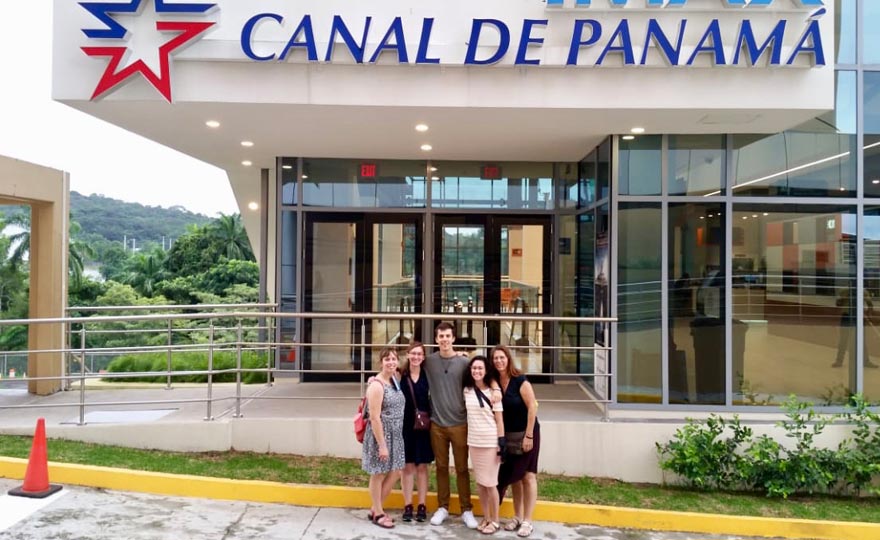


When we first drove into Panama City I was impressed by the skyscrapers that line the horizon. As we got closer, I loved seeing the modern landscapes and urban setting. I thought to myself, “This could be the place for me.” It had a seemingly perfect combo of Latin American culture, but also a Western influence. From the infrastructure to the recognizable restaurant chains, it was very obvious how much the city mirrored an American metropolitan city.
I was initially impressed by these features that so closely resemble my home. I enjoyed the feeling of being in a Western atmosphere because it represented something familiar to me, but I soon realized how this reality represents an unpleasant history between Panama and the US. At first sight, it demonstrates how the US has been a major influencer in the history and culture of the country. However, once you study the country’s history closer, you learn that Panama’s culture was essentially stripped away and dominated by US politics.
The wealth that is evident in Panama’s infrastructure is a direct consequence of the construction of the Panama Canal. With the profits of the Canal, Panama has established itself as the richest country in Central America. However, not all of its history is glamorous. Since its conception, the Canal was never a project Panamanians and the Panamanian government consented to begin. Yet, the United States overstepped the government to execute the plan for a canal and, in doing so, exploited the country’s lands and people to create a profitable trade route.
Moreover, the domestic and foreign workers were initially excluded from the profits of the Canal. Often times they were cheated out of better wages on the basis of being “unskilled” workers. Additionally, they were prohibited from entering an area known as the Canal Zone, as the name implies, the area immediately around the canal. This section of land was dominated by white “gringos,” who imposed their cultural norms of segregation in the country.
However, the relationship between Panama and the United States is glorified because of the Carter-Trijos treaties, in which the USA ceded control of the Panama Canal to the Panamanian government. This portion of history is etched in people’s memories in Panama. Both US President Jimmy Carter and Panama President Omar Torrijo are remembered as good men that sought to advance the conditions of Panamanians. In one interview, an individual shared how he remembered that these great diplomats had interest in progressing remote areas of the country, like in indigenous communities.
Thus, to my astonishment, I never encountered anyone in Panama that expressed animosity against the USA, despite their authoritarian presence in the past. Perhaps this is because the US invaded Panama in 1989 to remove the dictator Manuel Noriega. Some believe that Panamanians could have done this independently, but presumably, not as swiftly without the support of the US. I was disappointed that I did not know about these circumstances prior to visiting Panama, especially because it relates to my own history. One thing I have taken away from this trip is to study some of the significant events that have shaped the country’s cultures and current conditions before visiting. It does not need to be extensive, but enough to understand and relate with its citizens.
While in Panama, the cohort did an excursion to the Miraflores Locks to witness cargo ships passing through the Canal.